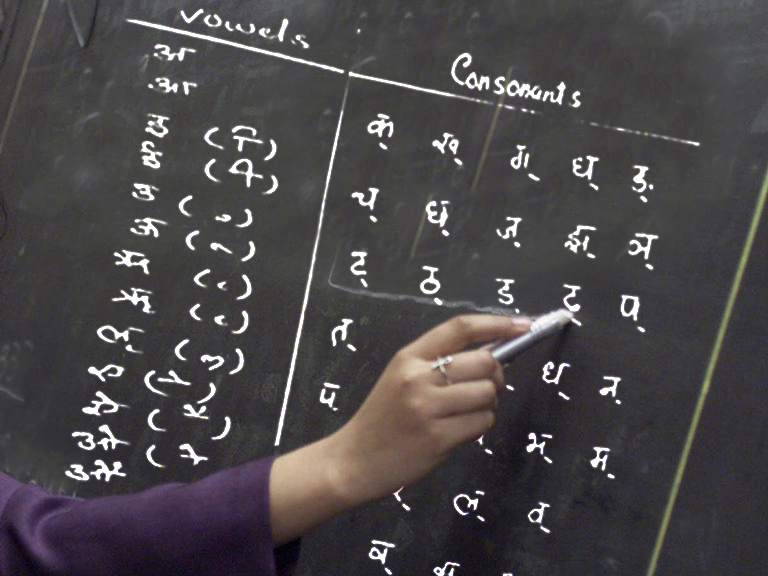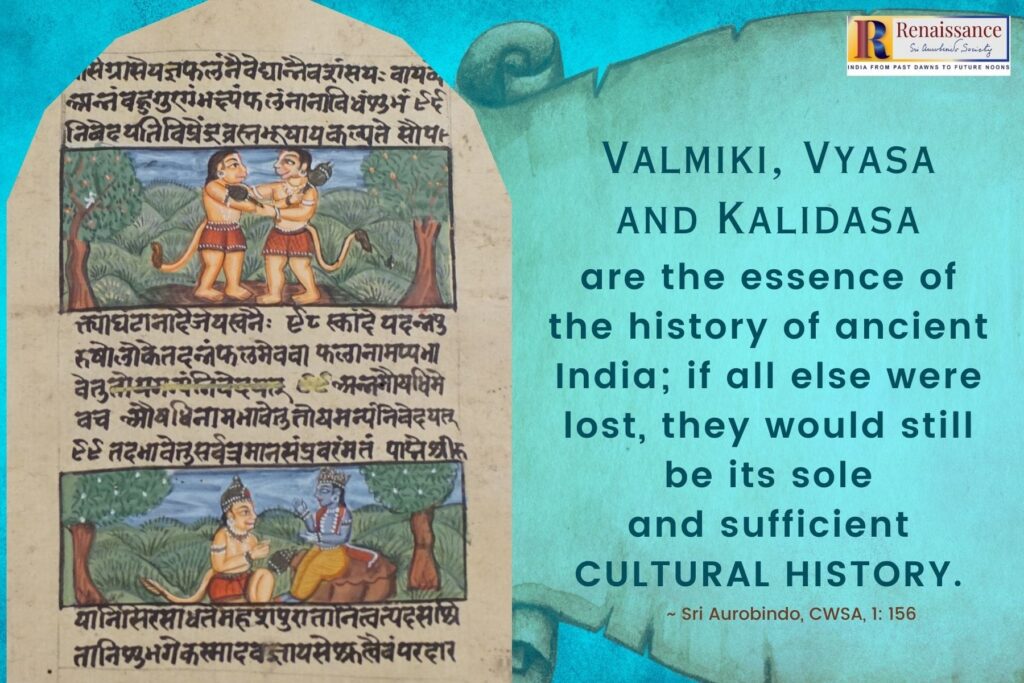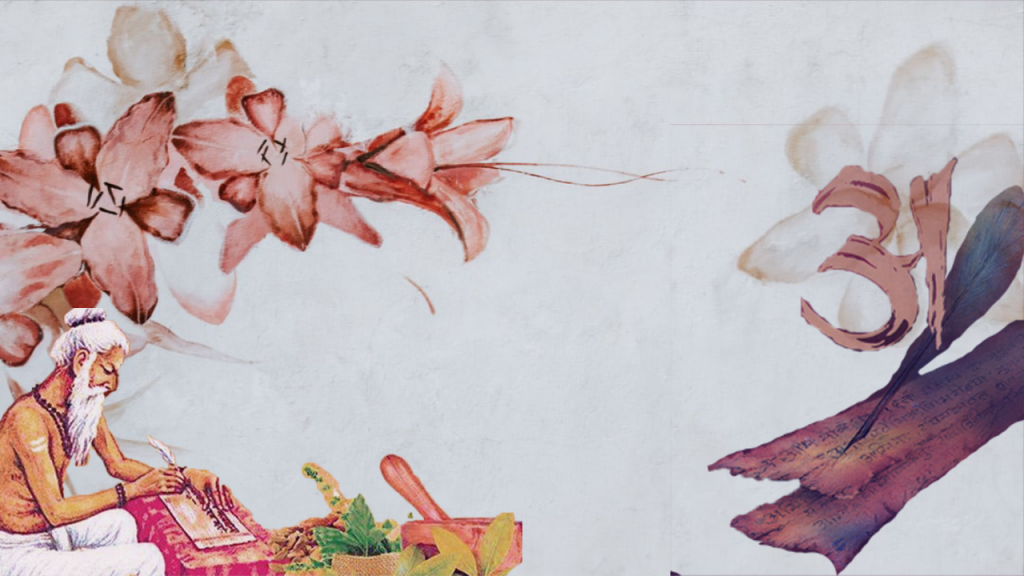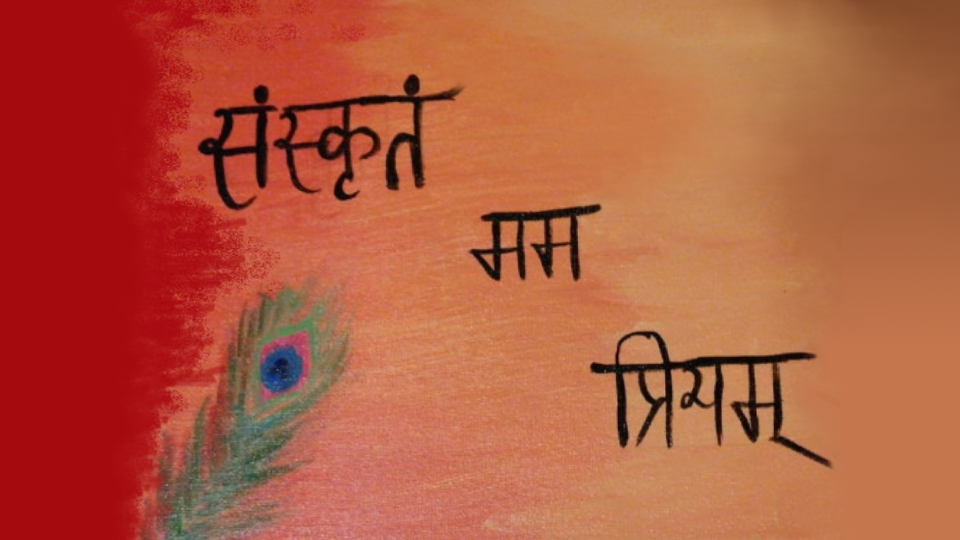संस्कुत इति शब्दस्य अर्थ: – सम्यक् कृतम् इति संस्कृतम् । संस्कृतशब्दस्य संबन्ध: संस्कृतिशब्देन अपि च संस्कारशब्देन सह अस्ति ।
प्राचीनकाले एतस्य नाम भाषा इत्येव आसीत् ।
संस्कृतभाषाया: विषये लोकेषु केचन दोषपूर्णविचाराः सन्ति।। एतस्मिन् संदर्भे अहम् अत्र तस्य प्रतियुक्तिं कर्तुं प्रयत्नं करोमि ।
- प्राचीनकाले संस्कृतम् केवलं राजभाषा आसीत् । तत् उपयुज्य राजान: शासनं कृतवन्त: । ते महिला: दलितान् च प्रताडितवन्तः ।
- सहस्राधिकवर्षकालेभ्यः संस्कृतभाषायां नूतनमुख्यरचना: न अभवन् ।
- संस्कृतभाषा मृता अस्ति ।
मम उत्तरपक्ष:
1. प्राचीनकाले संस्कृतम् केवलं राजभाषा आसीत् । तत् उपयुज्य राजान: शासनं कृतवन्त:। ते महिला: दलितान् च प्रताडितवन्तः ।
- प्राचीनकाले बहूनां नाटकानां रचना अभवत् । यदि सामान्यजनाः नाटकं द्रष्टुं न गच्छन्ति तर्हि केषां कृते तेषां रचना अभवत् ?
- संस्कृतरूपकाणि समाजस्य सर्वेषां जनानां आनन्दानुभवाय कृतानि । अत: संस्कृतं केवलं कुलीनवर्गस्य भाषा न आसीत् ।
- संस्कृतभाषायाः शब्दकोशे बहव: शब्दा: साधारणजनानां जीवनानि स्पृशन्ति स्म । एतेषां कर्मणां कृते शब्दा: शब्दप्रयोगा: च आसन्।
- वेदव्यासमहर्षिः, वाल्मीकिमहर्षिः, महाकविः कालिदासः च साधारणजना: आसन् ।
- ऋग्वेदे 407 ऋष्य: आसन्; 21 नार्य:, शेषा: पुरुषा: । अत: संस्कृतं केवलं पुरुषाणां कृते न आसीत् ।
- धर्मपालमहोदयेन लिखिते “The Beautiful Tree” नामके पुस्तके भारतस्य 7,50,000 ग्रामेषु संस्कृतपाठशाला: आसन् इति प्रतिपादितम् । एष: प्राचीनकालस्य वृत्तान्त: अस्ति । एतासु पाठशालासु ब्राह्मणजनेभ्य: अधिका: दलितजना: पठितुं आगतवन्तः।
2. सहस्राधिकवर्षकालेभ्यः संस्कृतभाषायां नूतनमुख्यरचना: न अभवन् ।
- 2018 वर्षस्य अप्रिलमासे एकविंशतिवर्षीयः तरुणः जैनमुनिः भक्तियशविजयजी “गूढार्थतत्वलोक:” नामकग्रन्थस्य विषये “यशोलता” इति टीकां लिखित्वा प्रख्यापितवान् । एतस्यां टीकायां 90,000 श्लोका: सन्ति । “गूढार्थतत्वलोक:” इति पुस्तकं शताधिकवर्षेभ्यः पूर्वं धर्मदत्तझामहोदयेन रचितम् आसीत् । एषः ग्रन्थ: मार्गशोधक: अस्ति इति विभाव्यते ।
- स्वामिनारायणपन्थस्य साधुः महामहोपाध्यायः आचार्यः स्वामी भद्रेशदासजी प्रस्थानत्रये “स्वामिनारायणभाष्यम्” इति टीकां लिखितवान् । अस्मात् कालात् 1200 वर्षेभ्यः पूर्वं आदिशङ्कराचार्य: एतां टीकां लिखितवान् । भद्रेशदासजी “स्वामिनारायणसिद्धान्तसुधा” नामकम् अन्यम् एकं ग्रन्थम् अपि रचितवान् ।
3. संस्कृतभाषा मृता अस्ति ।
- भारतदेशे 24,821 जना: संस्कृतभाषां मातृभाषा इति ख्यापयन्ति ।
- 2005 वर्षस्य एकं सर्वेक्षणात् ज्ञायते यत् संस्कृते 1947 परं 3000 पुस्तकानां रचना अभवत् ।
- 1967 वर्षात् परं बहवः लेखका: संस्कृतभाषाया: नानाविधविषयेषु संशोधनं कृतवन्तः, पुरस्कारान् च प्राप्तवन्तः ।
- केन्द्रसाहित्य-अकादमी-पक्षतः संस्कृते बालसाहित्यरचनार्थं पुरस्काराः प्रदीयन्ते ।
- भारतदेशे 16 संस्कृतविश्वविद्यालया: सन्ति ।
- अस्माकं देशे बहुषु विद्यालयेषु संस्कृतं पाठ्यते ।
- सहस्रश: संस्कृतपाठशाला: पारम्परिकशाला: च संस्कृतं पाठयन्ति ।
- 1970 वर्षात् परं राष्ट्रीयसंस्कृतसंस्थाने संस्कृतस्य प्रचाराय प्रसाराय च बहव: कार्यक्रमाः भवन्ति ।
- संस्कृतभाषायां चलनचित्राणि अपि उद्भावितानि । 1983 वर्षे आदिशङ्कराचार्यस्य जीवनम् अधिकृत्य “आदि शङ्कराचार्य” चलनचित्रस्य निर्माणम् अभवत् ।
- 1983 वर्षे भगवद्गीतनामकम् एकं चलच्चित्रम् अपि निर्मितम् आसीत् । “मुद्राराक्षसम्” चलनचित्रम् अपि निर्मितम् आसीत् अभवत् ।
- 75 अधिका: दैनिक-साप्ताहिक-मासिकपत्रिकाः च प्रकाश्यन्ते ।
- दूरदर्शनमाध्यमेन संस्कृतवृन्तान्तस्य प्रसारणं भवति ।
- Social Media माध्यमेषु जना: tweet कुर्वन्ति, अस्माकम् पन्तप्रधान: अपि tweet करोति । Tweet माध्यमेषु प्रत्येकविशेषदिने संस्कृतस्य प्रसारार्थं एकघण्टाया: कृते “Samskrita Appreciation Hour” भवति ।
- भारत देशे सप्तग्रामा: प्रतिदिनं संस्कृतेन संभाषणं कुर्वन्ति; कर्नाटकराज्ये ग्रामद्वयं अस्ति मात्तुर होसाहली च; मध्यप्रदेशराज्ये ग्रामत्रयं, राजस्थाने ओरिस्साराज्ये च एकैकः ग्रामः अस्ति।
अन्यानि बहुनि उदाहरणानि दातुं शक्नोमि । परन्तु, अहम् श्रद्धान्वित अस्मि । संस्कृतम् आदिकालत: भारतदेशस्य प्राण:, संस्कृतं भारतदेशस्य संस्कृतेः जननी अस्ति ।
अन्तत: अहं आत्मविश्वासेन ख्यापयामि यत् संस्कृतं सर्वेषां लोकानां कृते मङ्गलमयं कल्याणमयं च अस्ति इति ।

ENGLISH TRANSLATION
The very word, Samskrita means something that is perfectly done. Samskrita is related to our Samskruti and Samskara. In ancient times, it was called simply as Bhasha.
There are some misconceptions in the minds of a lot of people about Samskrita. In this brief write-up I try to dispel some of those misconceptions to my best ability.
Some misconceptions about Samskrita include:
- In ancient times, Samskrita was only the language of the kings and emperors. They used as the language of governance. It was also used to suppress women and dalits.
- For over a thousand years, there has been no new significant creation or advancement in this language.
- Samskrita language is a dead language.
My point by point uttarpaksha (rebuttal):
Misconception 1: Samskrita was only the language of the kings and emperors who also used it to suppress women and dalits.
- Many Sanskrit dramas and poems were created in ancient times. If ordinary people were not enjoying these works of literature, then for whom were they created?
- The dramas, in particular, were enjoyed by all sections of the society. Obviously, Samskrit was not used only the by elite.
- There are many words in Samskrita vocabulary which concern the day-to-day lives of ordinary people. Numerous words and phrases are found for all kinds of working-class people.
- Maharshi Veda Vyasa, Maharshi Valmiki, Mahakavi Kalidas all belonged to what is today known as dalit section of the society.
- In Rigveda, there are references to a total of 407 Rishis, out of which 21 are women Rishis.
- In the book authored by Shri Dharampal, “The Beautiful Tree”, there are references to 7,50,000 villages in ancient times, all having Samskrita Pathashalas. In many such schools, there were more Dalit students than Brahmin students.
Misconception 2: For over a thousand years, there has been no new significant creation or advancement in this language.
- In April 2018, a 21-year-old Jain monk Bhaktiyashvijayji wrote and published a commentary on “Gudhartha Tattvalok”. This is a commentary of 90,000 shlokas. Gudhartha Tattvaloka written a hundred years earlier by Dharmadutt Jha was considered a seminal work.
- Mahamahoapadhyaya Acharya Swami Bhadreshdasji of BAPS wrote a commentary titled “Swaminarayan Bhashya” on “Prasthanatrayi”. It is accepted that prior to this work such a commentary was written about 1200 years ago by Shri Adi Shakaracharya. Bhadreshdasji also authored “Swaminarayn-Siddhant-Sudha”.
Misconception 3: Samskrita language is a dead language.
- As per the latest census, 24,821 people have declared Samskrita as their mother-tongue in India.
- In a study conducted in 2005, it was established that since 1947, 3000 new Sanskrit books have been published.
- After 1967, many Samskrita scholars have conducted their research in different subjects in Samskrita and have won awards for their work.
- Under the Sahitya Akademi, in its special Literature for Children section, many new publications have been made available, several of which have won awards.
- In India, there are 16 Samskrita universities.
- Samskrita is taught in numerous educational institutions all across India.
- There are thousands of traditional Pathashalas and Samskrita Vidyalayas where Samskrita is taught.
- Since 1970, Samskrita Sansthan is pro-actively engaged in the propogation and development of Samskrita language.
- Films have also been made in Samskrita language. In 1983, a film was made on the life of Shri Adi Shankaracharya. There was also a film based on Shrimad Bhagwad Gita, and another based on Mudrarakshasa.
- More than 75 dailies, weeklies and monthly newsletters are also published in Samskrita.
- News bulletins are telecast in Samskrita on National Television.
- On Twitter, many people write their tweets in Samskrita. India’s Prime Minister also occasionally tweets in Samskrita. There is also a daily Samskrita Appreciation Hour on Twitter.
- There are 7 villages in India where people routinely speak Samskrita in their day to day usage. In Karnataka state, there are 2 villages namely, Mattur and Hosahhali; in Madhya Pradesh state, there are three villages; and there is a village each in Rajasthan and Orissa states where people primarily speak Samskrita.
I can give many more examples. But the above is sufficient to say with full faith that Samskrita has been our breath as well as origin of our Samskruti.
I also humbly state that Samskrita is good for happiness and well-being of humanity.
Cover image collage: Ranjana Swain
Sanskrit alphabet image: Rishabh Sharma



